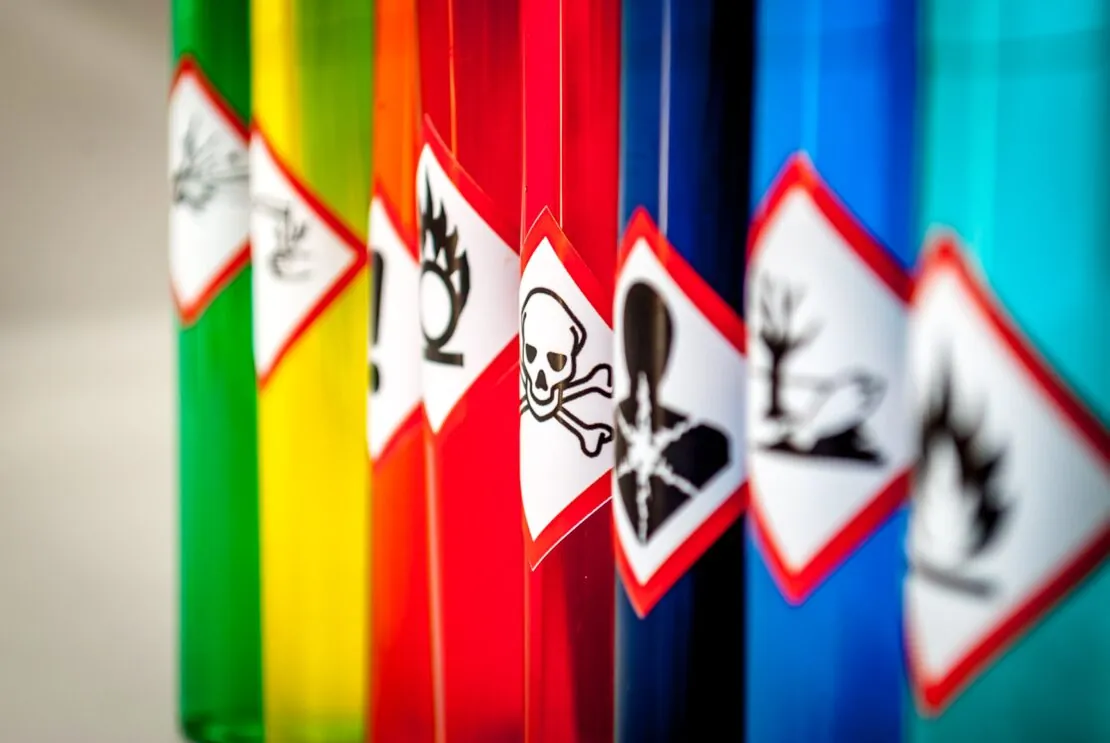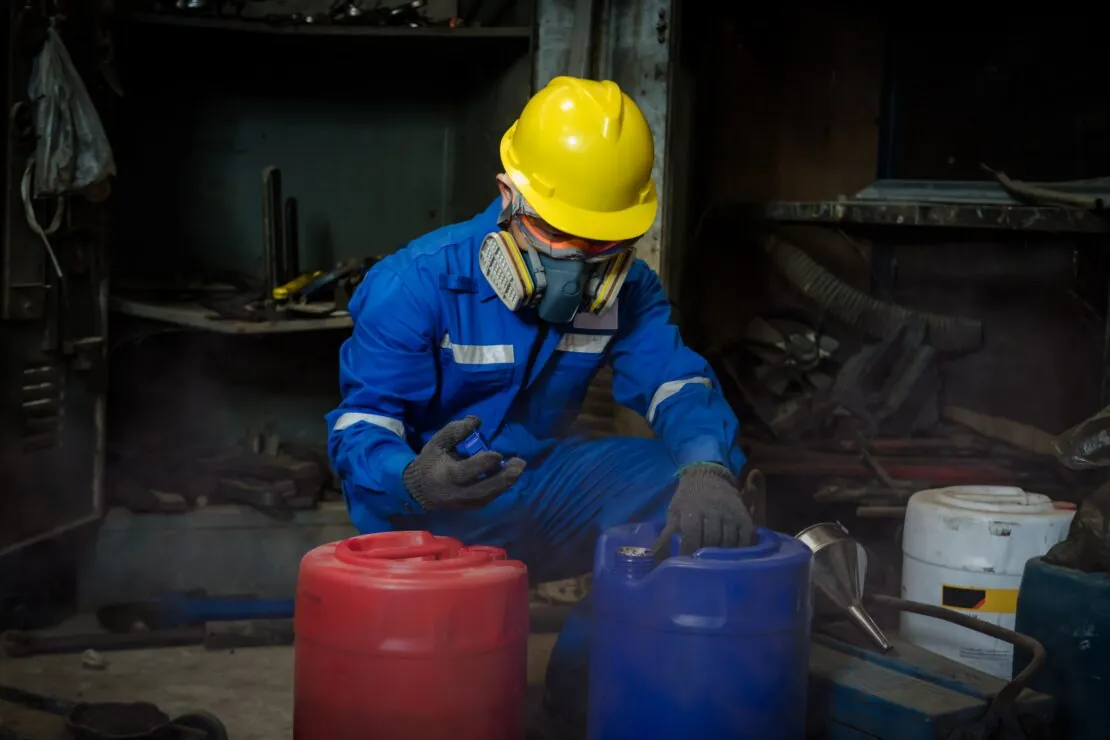Dangerous Chemicals
Exposure to chemicals and toxic substances can lead to various health issues that could be as mild as skin irritation and sensitivity or could lead to cancer or other terminal illnesses. Chemicals are also physically dangerous because they can be corrosive, flammable, and some can explode.
The Occupational Safety and Health Administration (OSHA) has created standards to ensure that construction workers take protective measures when exposed to chemicals and toxic substances. However, employers are responsible for disseminating this information to workers and ensuring their understanding of the risks. This responsibility falls on employers, and they are liable when they fail to meet them.
Additionally, under OSHA’s Hazard Communication Standard, chemical manufacturers and importers must label chemical containers that they ship products in, informing construction workers of the hazardous contents.
If you or a loved one was injured while working with dangerous chemicals on a construction site, then contact Grossman Law Offices at (866) 982-5094 to schedule your free consultation with one of our construction accident lawyers. We can assist you in navigating the Worker’s Compensation system and take the stress off your shoulders.

The Most Common Dangerous Workplace Chemicals
Common toxic chemicals and substances include:
- Formaldehyde
- Diesel exhaust
- Asbestos
- Asphalt fumes
- Hexavalent chromium
- Metalworking fluids
- Silica
- Solvents
- Cadmium
- Benzene
- Arsenic
- Lead
- Mercury
Lead
Elevated blood lead levels (BLL) start at or above 5 micrograms of lead per deciliter of blood (µg/dL). According to data reported to the California Occupational Blood Lead Registry, 38,440 workers had their BLL tested, resulting in the discovery that 6,051 workers had an elevated BLL. Of those workers, 14,002 were tested twice and 20 percent of them had even higher levels of lead than in previous tests. The BLL for workers in metal-related and construction industries was BLLs ≥40 µg/dL. Workers who manufacture or handle firearms, bullets, welding, or other contact with metal had a BLL many times higher than the safe limit. Exposure to lead over time can lead to kidney disease, cognitive dysfunction, high blood pressure, and infertility.
Benzene
Exposure to benzene has been linked to leukemia and other cancers of blood-forming organs, damage to the bone marrow, and high levels of chromosomal changes. Short-term exposure to benzene can cause dizziness, confusion, drowsiness, intense headaches, and loss of consciousness. Construction workers exposed to industrial emissions can suffer short-term and long-term effects of benzene inhalation. You should call us right away if you worked on a construction site and were exposed to benzene.
Solvents
Exposure to solvents can be through inhalation, ingestion, or contact with the skin. Exposure to the industrial solvent trichloroethylene (TCE) can affect the central nervous system (CNS) and lead to dizziness, headaches, facial numbness, and tingling in the extremities. It has also been linked to kidney cancer and respiratory failure.
Asbestos
The fire-resistant properties of asbestos made it appealing to shipbuilders, automobile manufacturers, and others in the construction and manufacturing industries. It provides sound insulation, heat insulation, and is very inexpensive. It’s also widely available and can be found in the majority of buildings. For these reasons, it was used throughout the construction industry and is one of the most dangerous and abundant substances.
Asbestos can be found in fire blankets, roof tiles, ceiling tiles, room partitions, toilet seats, electrical panels, down pipes, and other building products. Asbestos fibers are incredibly tiny and get stuck deep in the lung tissue, which is why it is a major cause of a rare form of cancer called mesothelioma. Construction workers became exposed to asbestos from demolishments, sawing, and drilling.

Common Dangerous Chemical Exposure Illnesses
The most common injuries and illnesses that our law firm sees include:
- Acute myeloid leukemia, often caused by benzene
- Bronchiolitis obliterans, often called “popcorn lung”
- Coal Worker’s Pneumoconiosis, also called “black lung”
- Hypersensitivity Pneumonitis (HP)
- Kidney cancer
- Lead poisoning
- Mesothelioma
- Non-Hodgkin’s Lymphoma
Damages In a Dangerous Chemical Case
Economic damages compensate victims for monetary losses. The bulk of your economic damages will come from your medical expenses, lost wages, and lost earning capacity. They also include travel expenses to and from medical appointments, modifications to your home or vehicle, and medical devices like a respirator.
You can receive noneconomic damages if you have suffered nerve injuries, paralysis, the loss of a limb or digits, facial disfigurement, loss of consortium, and the loss of one of your senses or sense organs, like your ability to see or smell. Family, friends, and coworkers can attest to your physical and personality changes since your injury, such as weight loss or gain, panic attacks, crying spells, or sleep issues.
How An Attorney Can Help You
Toxic exposure lawyers handle personal injury and wrongful death cases when construction workers develop cancer and other illnesses. Call Grossman Law Offices today at (866) 982-5094, and we will schedule a free case evaluation so that we can explain your rights to you and inform you of your next steps.











